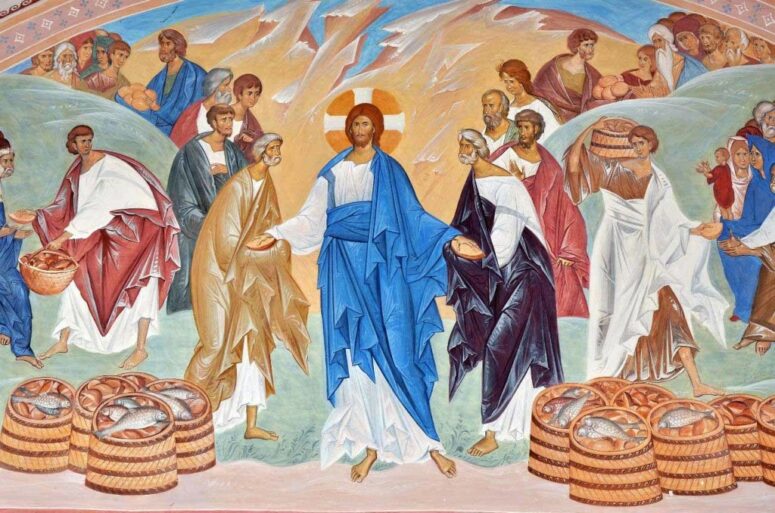4th August 2024
Lectionary Readings: Ex 16:2-4, 12-15; Ps 78: 3-4. 23-25, 54; Eph 4:17, 20-24; Jn 6:24-35
Theme: I am the bread of life

Today’s gospel passage from John chapter 6 is made up of four pieces of narrative writing, some very brief, alternating with four meditations. The narrative pieces (vv. 24-25; 28; 30-31; 34) are about “the crowd” who had experienced the sign of the loaves and fishes, and each piece includes either a question or a request. The meditative pieces (vv. 26-27; 29; 32-33; 35) are all in the words of Jesus, beginning with either “Jesus answered them” or “Jesus said to them”. These are best read not as a record of what Jesus actually said at the time but as words of the Risen Jesus speaking to us, the readers. The anonymous crowd is locked on the level of merely human thinking, they keep missing the point, while Jesus’ words are on a different plane altogether. In them we have John the evangelist probing the meaning of Jesus’ life, death and resurrection for us, his followers.
The theme of this passage is about eating, as is shown by the repetition of the words bread (6x), food (2x), loaves (1x) and manna (1x). Jesus uses “bread” five times and on four of these he adds “from heaven”, so he is speaking of something other than the ordinary bread that the crowd is asking for. Once Jesus also adds “of God” and finally he proclaims “I am the bread of life” where the Greek ego eimi (I am) is the translation in the Septuagint for YHWH. The phrase “bread of life” does not occur in any of the rabbinic writings so would probably not have been in use at the time of Jesus, but the two concepts of “bread” and “life”, have a rich history in Jewish religious thinking and are brought together, for example, in Deuteronomy 8:3, “…one does not live by bread alone but by every word that comes from the mouth of the Lord”. “Bread” was a metaphor for the Torah and its power to nourish our deeper lives.

The Torah is called the Torah of Life in Sirach 17:11, “He bestowed knowledge upon them, and allotted to them the law of life”. Elsewhere it is called the “Tree of Life” (Proverbs 3:18} with its allusion to the Tree of Life in the middle of the garden in Genesis 2:9. The Jewish sages used bread (and wine) as metaphors for Torah, as in Pesiqta 178A, “Rabbi Abba b. Kahana (ca. 310)…Why do you spend your money on…that which is not bread? Because…you do not fill yourselves with the bread of the Torah… with the wine of the Torah” (Strack & Bellingham, John 6.35A).
In Christianity world-wide it is the Risen Jesus Christ, who is the Word of God, the Torah, the source of life for all who come to him and are nourished, especially sacramentally, by his presence in their lives.
For Reflection and Discussion: 1. How do you respond to the statement in the first paragraph above about the words of Jesus in this text not being historical? 2. Might this commentary have any effect on your approach to the reception of Eucharist?
Bibliography: Strack, H.L. & Billerbeck P.A Commentary on the New Testament from the Talmud and Midrash Vol.1 (Bellingham WA: 2022);
This week’s Sunday Liturgy Commentary was prepared by
Kevin L. McDonnell cfc, Australia, Bat Kol Alumna/Alumnus: 2003, 2004, 2005
[Copyright © 2024]

Comments are closed